7 ways to calm a scared cat
Do you have a scared cat on your hands? We walk you through the top signs to be on the lookout for and some easy ways you can help to calm your kitty down
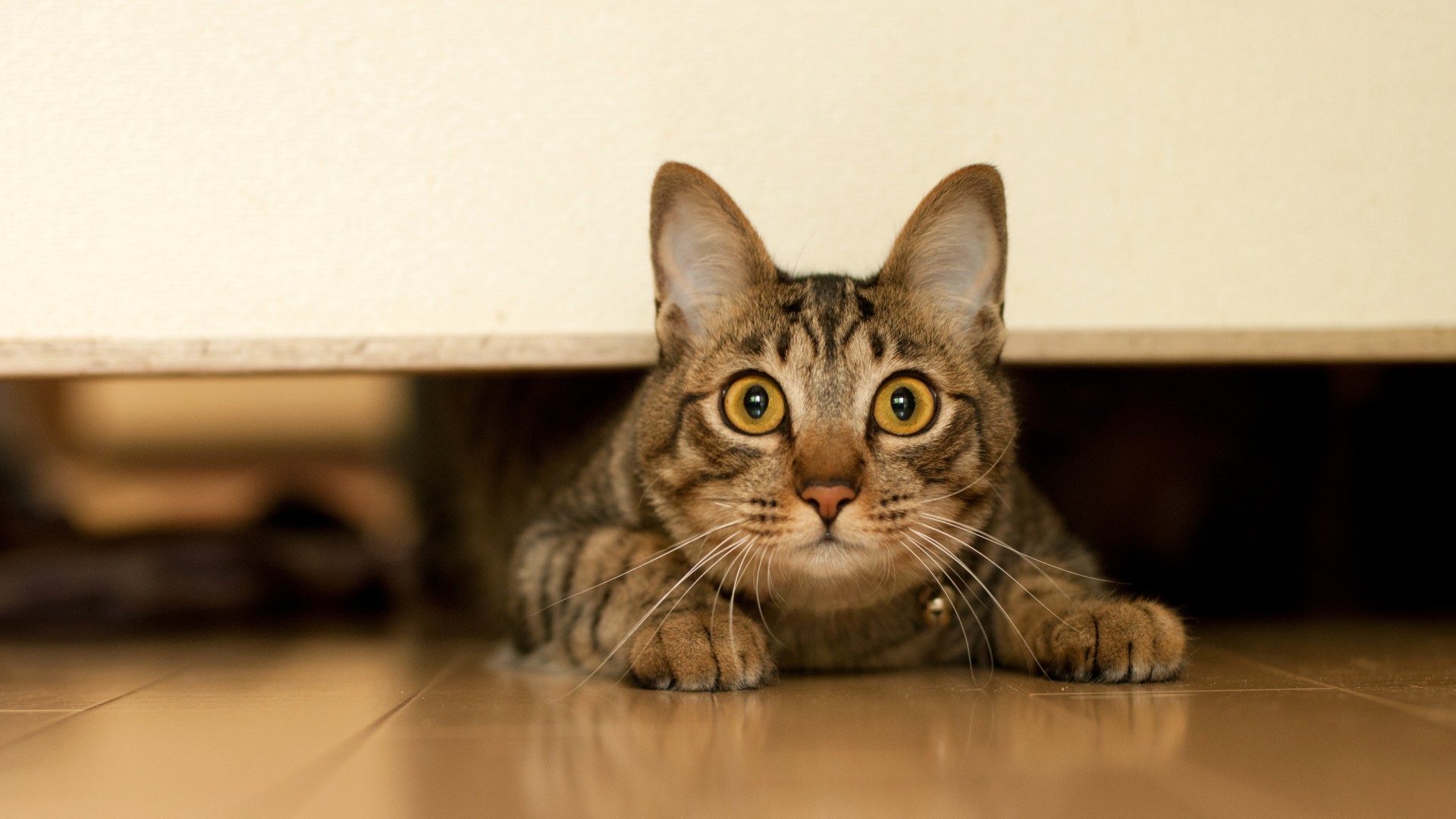
Are you looking for ways to calm a scared cat? You’ve come to the right place! Just like us humans, our feline friends come in all shapes, sizes and temperaments, with some being more skittish than others.
While investing in a few of the best cat toys can certainly help to soothe a stressed-out kitty, there are lots of other tricks you can employ to help your cat to feel calmer.
Because cats are creatures of habit who don’t tend to take kindly to changes in their environment, it’s often minor or major upheavals that can trigger a fear response. Things such as moving house, having a new pet or new family member in the home, loud appliances or noises, and trips to the vet are all stimuli that can trigger the fight, flight or freeze response within your cat.
Some cats become so scared that they lose control of their bladder or bowels, while others turn their fear into aggression and lash out. And then there’s another group of cats who will simply head for the hills the minute they perceive a threat. All of these are common cat behavior problems that are very normal when a cat is feeling frightened.
Regardless of your cat’s response, there’s plenty you can do to calm a scared cat. Below, we walk you through our top tips and tricks, plus reveal the signs to be on the lookout for that will alert you to whether your cat is feeling frightened. Let’s take a look…
- Best cat treats: Spoil your kitty with a healthy snack
- Preparing for your kitten's first vet visit
- Anxiety in cats: Causes and how to help a stressed feline
How to tell if your cat is scared
Deciphering cat communication can take a little bit of time, but once you have an idea of what it is your kitty is trying to tell you, you’ll find it much easier to understand (and help) your feline friend.
First up, pay close attention to your cat’s posture. When a cat is feeling threatened, it will try to make itself appear bigger by arching its back and puffing out its fur, but when it’s feeling scared, it will often try to make itself look smaller by crouching down and tucking itself into a ball.
Another thing to be on the lookout for is the position of your cat’s tail. When a cat is happy and feeling confident, their tail will usually be high and it will sometimes quiver or vibrate if your cat is feeling particularly excited or playful. For a scared cat, the tail will be low and often tucked between the legs to ensure they look like a small target.
The eyes and ears are another way that a cat will indicate how it’s feeling. Ears that are flattened and dilated pupils are both potential signs that your cat is feeling scared. Vocalization may also be common, with yowling, shrieking and hissing all indicators of distress.
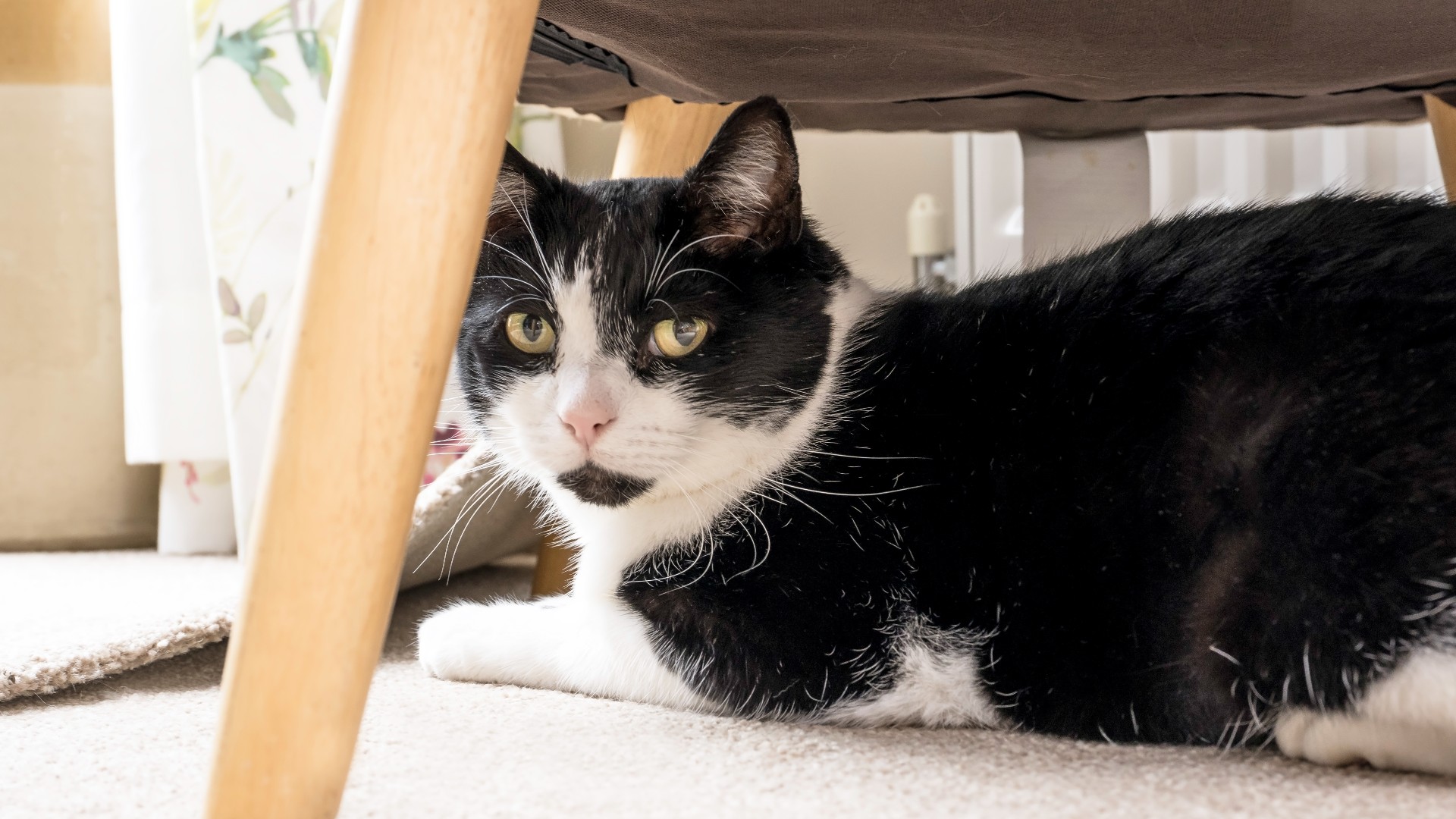
Ways to calm a scared cat
Now that you know the signs to be on the lookout for when it comes to a scared cat, let’s explore some of the ways that you can provide comfort for your feline friend to help them to feel calm again.
1. Make sure they have their own safe space
It’s really important that your cat has their own soothing sanctuary that they can retreat to when they’re feeling stressed. We recommend investing in a cozy cat bed and popping it in a quiet spot in your home. Furnish it with a warm and snuggly blanket and a few cat toys to provide a sense of comfort and companionship.
If you set up an area in your home and find your cat doesn’t use it when they’re feeling scared, it could be that it’s still too out in the open. Watch where they head to when they’re feeling frightened and use that as your guide. For example, if they tend to like hiding under the couch or bed or in the wardrobe, set up a little den for them in one of these spaces.
2. Try to minimize the things that scare them
If at all possible, try to reduce or eliminate the things that scare your cat. Some cats find noisy household appliances (like the vacuum cleaner) to be quite triggering, so try using these when your cat is outside or pop them in another room so that the sound isn’t as loud.
It’s important that you don’t walk on eggshells around your cat as you want them to get used to living in your home as it usually is, but doing your best to be aware of the things that set your cat off can help you be more mindful.
Investing in a microchip cat flap can be a great way of giving your feline friend the freedom to head outdoors when they need to get away from loud noises inside the home.
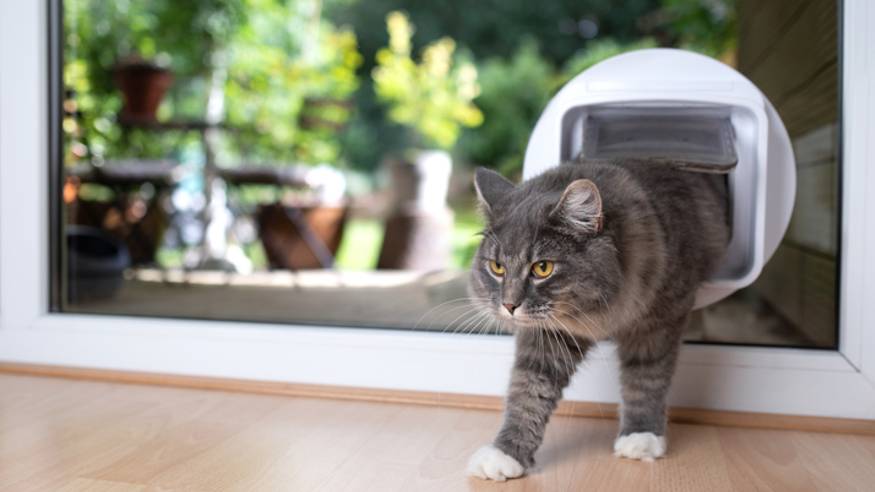
3. Respect their privacy
Just like people, cats all have their own ways of dealing with feeling scared. Some cats will become super clingy and want to follow you everywhere you go while others will want to be left alone.
If your cat falls into the latter group, it’s really important that you don’t try to force them to be with you. Instead, respect that they need time alone and wait for them to come to you when they’re ready.
4. Introduce new things slowly
Most cats are creatures of habit who don’t respond particularly well to change, which is why it’s crucial that you introduce new things slowly in order to give your feline friend time to adjust.
For example, traveling with a cat is a real skill and requires that your kitty get used to being both in a carrier and in a moving vehicle. You’ll want to ensure that you spend a good few weeks prior to any trip getting your cat used to both of these things.
There are other things, like moving house or introducing new pets, that also require a staggered approach. If you’re looking for more guidance on how to approach these situations, our guides to how to move house with a cat and how to introduce a kitten to a cat are full of helpful tips.
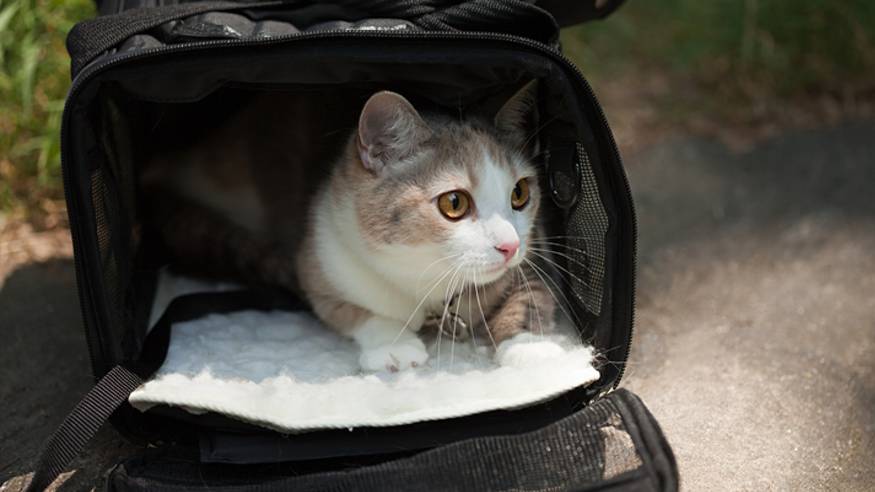
5. Keep exits sealed
If you know that certain outside noises cause your cat to feel scared, it’s a good idea to close all the windows in your home and any exterior doors to make sure your cat doesn’t try to flee. Fireworks, thunder and loud music coming from social gatherings are all potential triggers, so try closing the curtains and putting the TV on to help drown these sounds out.
6. Try a pheromone diffuser
While they’re not effective for every cat, pheromone diffusers (like Feliway) can really help to soothe the stress response that scared cats experience. Basically, these work by using a synthetic copy of your feline's natural pheromones to send a calming message to your cat that everything is okay.
With your veterinarian's guidance, you can also try using the herb valerian, which is known to be good for helping to calm a cat during periods of high anxiety.
Just a word of caution though - never give your cat human valerian pills or liquid as these are often too strong. Instead, choose a product specifically designed for cats.
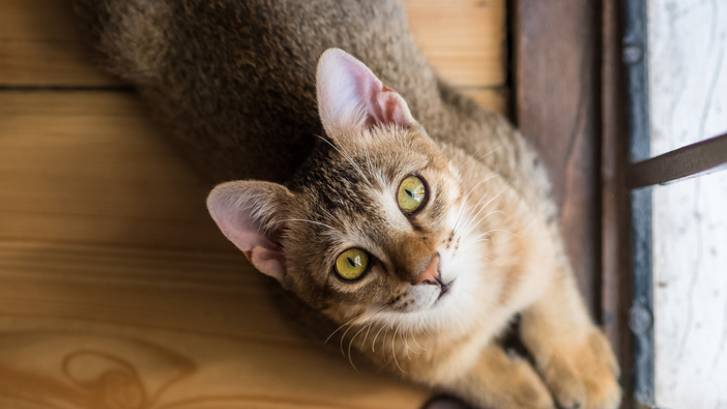
7. Do some desensitization work
Dog owners will be very familiar with this one, but believe it or not, desensitization also works really well with our feline friends. If your cat gets scared around a particular noise and it’s a moderate to severe phobia, then spending some time on behavior modification can be really helpful.
When it comes to desensitization, the key is to expose your cat to their phobia in a way that is slow, positive and controlled. For example, if they have a fear of fireworks or thunder, record these sounds (or look for them on YouTube) and then start by playing this back to your cat on a very low volume and for short periods.
Every time your cat stays where they are and doesn’t run off, reward them with lots of praise and a few tasty cat treats. When your cat appears comfortable and relaxed with one volume level, you can gradually turn it up a notch. If your cat shows signs of being scared, turn it back down. Continue to slowly repeat this process over several weeks until your kitty can stay calm and relaxed.
PetsRadar Newsletter
Get the best advice, tips and top tech for your beloved Pets

Kathryn is a freelance writer who has been a member of the PetsRadar family since it launched in 2020. Highly experienced in her field, she's driven by a desire to provide pet parents with accurate, timely, and informative content that enables them to provide their fur friends with everything they need to thrive. Kathryn works closely with vets and trainers to ensure all articles offer the most up-to-date information across a range of pet-related fields, from insights into health and behavior issues to tips on products and training. When she’s not busy crafting the perfect sentence for her features, buying guides and news pieces, she can be found hanging out with her family (which includes one super sassy cat), drinking copious amounts of Jasmine tea and reading all the books.
